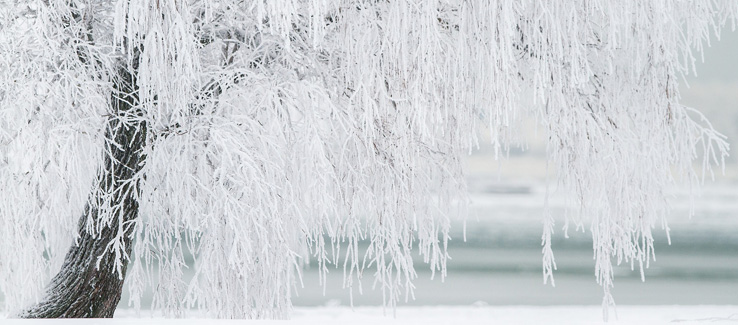
Summer is over and with it goes the growing season for trees. As cold weather quickly approaches, now is the time to help your trees prepare for the winter months.
By lending a hand to your trees in the fall, they will suffer less winter damage, making them more resistant to disease and infestation in the spring and summer months ahead.
fasttreeremovalatlanta.com gathered essential information and tips for both evergreen and deciduous winter tree care, including information on dormancy, deep watering, tree wrapping, pruning, and other preparations for the coming winter season.
Deep Water Your Trees in the Fall
All of your tree’s roots are on a continual march to supply water and nutrients to the tree above. They can spread 2 to 3 times the size of the canopy, and given the right soil and moisture conditions, they will grow very deep.
During the fall months, those same roots begin collecting and storing water for the coming winter months when water is often unavailable or unable to penetrate the ground.

Throughout fall and right up to the first freeze, give your trees a weekly deep watering. Deep waterings are generally defined as allowing enough water flow to saturate the top eight to ten inches of soil.
Mulching Protects Roots from Dying
Mulching is beneficial in many ways. It naturally curbs the growth of weeds, adds nutrients to the ground as it decomposes, and more importantly helps the soil maintain warmth and moisture.
Fall is the perfect time to mulch your trees with a 3 to four-inch layer of organic mulch start at the base of the tree (without covering the root flare) and extending to the tree’s dripline. If there is an existing layer of matted mulch, it should be fluffed or removed before adding another layer.
The combination of deep watering with proper mulching is one of the most significant advantages you can offer your tree in its fight to remain healthy.
Dormancy Is How Trees Prepare Themselves for Winter
Sometime back in mid to late summer, your trees stopped growing. They naturally did this to allow their new growth time to mature or “harden” before winter.
As temperatures begin to fall, another internal trigger is about to go off. The leaves of deciduous trees will start to change color and eventually drop to the ground signaling their entry into dormancy.

While evergreens do not lose all of their foliage, they do slow down during winter months and will benefit just as much from your fall assistance.
Tree Pruning During Dormancy
The safest time of year to prune your trees is in late fall once your trees have gone dormant. Pruning at this time allows you to remove unwanted, damaged, or dead growth while encouraging future spring growth.
As the threat of insect infestation and fungal infections are significantly reduced in late fall, your biggest concern is making sure that the cuts are made properly so the tree can compartmentalize the wound and heal itself quickly.
Read Ideal Times for Tree Pruning, Cutting and Emergency Tree Removal then watch this video to see how a proper pruning cut is made.
Winter Protection for Young Trees
Recently planted trees, especially those that are not native to your region require special attention. As it may take a tree several seasons to acclimate itself to its location, the following should be done to protect it from winter elements.
Deep watering through the fall
Mulching from the trunk’s root flare to the dripline
Trunk wrapping
Wrapping trees in burlap
Burlap coverings are placed around evergreen shrubs and trees in the winter to protect them from the sun and wind. A frame or stakes should be used to prevent as much contact with the foliage as possible.
Read 3 Tips for Young Trees – Pruning, Tree Care and Protection then watch this video to see how easy it is to apply trunk wrapping.
People Also Ask
Q: Should I Water New Trees in Winter?
A1: Yes – during mild or extremely dry winters. Deep watering once a month will help get moisture to the roots.
A2: No – if the ground is frozen or there’s significant moisture or snowfall.
Q: Why do you wrap a tree in burlap?
A: Burlap effectively protects plants from winter burn which is a combination of direct sunlight, wind, and low soil moisture. Burlap allows the tree to breathe and doesn’t trap heat which makes it much more desirable than plastic or other materials.
Q: Can a tree freeze to death?
A: Yes. But very unlikely. While half of a tree’s mass is water, trees won’t entirely freeze. Trees alter their living cell membranes to be more pliable, allowing water to evacuate the cells and rest between them.
Protecting Trees in Winter
As this winter season and dormancy approach, knowing how to water, prune, wrap, and protect your trees will help them emerge stronger and healthier in the spring.

In this article, you’ve learned about deep watering in the fall, and how mulching preserves warmth and moisture for roots. Also covered was when and how pruning should take place, how to protect young trees, and some of the common questions other tree owners are asking.
By leaving a tree to fend for itself during the winter months, you are risking the decline of its health, infestation, illness, and ultimately, its death. Dead, dying, or weakened trees may fall at any time posing a tremendous risk to your property and to your physical safety.
https://plus.google.com/+Fasttreeremovalatlantaservices(404) 220-9965
To view the orignal version of this post, visit: http://www.fasttreeremovalatlanta.com/how-to-protect-trees-in-winter

No comments:
Post a Comment